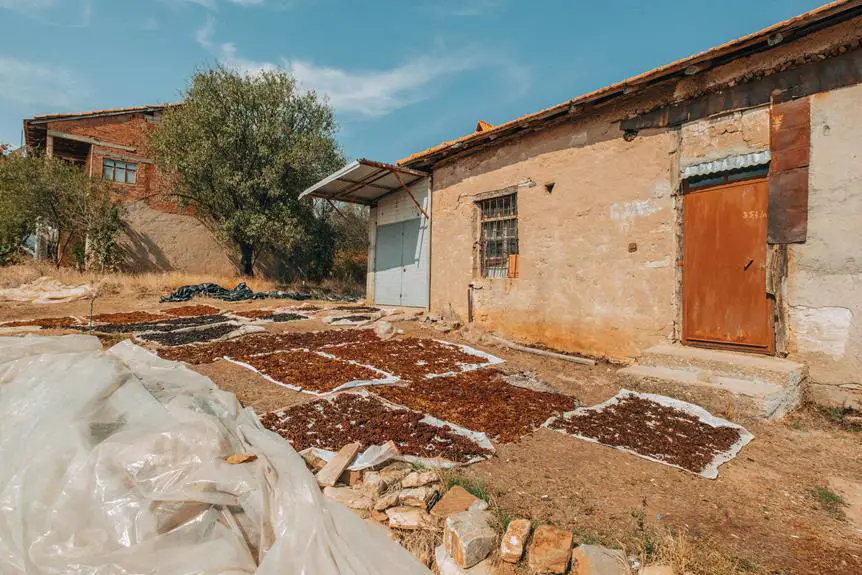You can transform your tiny home into a thriving oasis with fresh, fragrant, and flavorful organic herbs! Start by choosing herbs that thrive in your local climate and suit your cooking style. Devote a few square feet to your favorite herbs in a sunny spot, using a container with drainage holes and at least six inches of depth. Make sure to provide bright, indirect light, and maintain a consistent watering schedule. Catch pests early, and introduce natural predators to keep them under control. With these tips, you’re off to a great start – and there’s even more to discover as you grow your mini-garden!
Choosing the Right Herbs
When selecting herbs for your organic garden, consider which ones will thrive in your local climate and suit your cooking style, as some herbs are more finicky than others.
You’ll want to choose herbs that’ll love the amount of sunlight your garden gets, and that’ll tolerate your region’s temperature and humidity levels.
For instance, if you live in a hot and dry area, you might want to opt for drought-tolerant herbs like rosemary and thyme.
On the other hand, if you’re in a cooler and more humid climate, herbs like mint and lemongrass might be a better fit.
Think about the recipes you love to cook and the flavors you enjoy.
Are you a fan of Italian cuisine? Basil and oregano are must-haves.
Do you love spicy dishes? Cilantro and chili peppers are the way to go.
You can also consider growing a mix of herbs that’ll complement each other in flavor profiles, like pairing sweet herbs like basil with savory ones like parsley.
Creating a Mini-Garden Space
Transform a small corner of your yard or a sunny windowsill into a thriving mini-garden space by devoting a few square feet to your favorite herbs.
You’ll be amazed at how a tiny plot can yield a bounty of fresh flavors and fragrances.
Start by selecting a spot that gets at least four hours of direct sunlight a day. If you’re short on outdoor space, consider a windowsill or balcony with a southern exposure.
Next, choose a container that’s at least six inches deep to give your herbs’ roots room to grow. Make sure it has drainage holes to prevent waterlogged soil.
You can use a traditional pot, a window box, or even a repurposed planter box. Add a layer of organic potting mix and you’re ready to plant your herbs.
Don’t overcrowd the container – give each herb about six inches of personal space.
With a little care and attention, your mini-garden will thrive, providing you with a constant supply of fresh, fragrant herbs to elevate your cooking and brighten your space.
Lighting for Optimal Growth
As you settle your herbs into their new mini-garden home, it’s time to shine a light on one of the most critical factors in their success: adequate lighting.
Herbs need bright, indirect light to thrive, so you must provide them with the right amount of illumination. South-facing windows are ideal, but if that’s not possible, you can also use grow lights. Fluorescent lights or LED grow lights are great options, as they emit minimal heat and won’t scorch your herbs.
When using grow lights, make sure to position them 6-8 inches above your herbs and adjust the distance as they grow. You’ll also want to maintain a consistent light schedule, with 12-14 hours of light and 10-12 hours of darkness.
This will help regulate your herbs’ internal clock and promote healthy growth. By providing your herbs with the right amount of light, you’ll be rewarded with lush, flavorful foliage and a bountiful harvest.
Watering and Humidity Control
Your herbs need consistent moisture, especially when they’re young, so you must develop a watering routine that provides about 1-2 inches of water per week, either from rainfall or irrigation.
Check the soil daily, and water when the top inch of soil feels dry to the touch. Avoid overwatering, which can lead to root rot and other problems. When you do water, make sure to water thoroughly, so the pot drains well to prevent waterlogged soil.
In addition to watering, maintaining the right humidity level is essential for healthy herbs.
Most herbs thrive in a humid environment, typically between 40-60% relative humidity.
You can increase humidity around your plants by placing the pot on a tray filled with water and pebbles or using a humidifier nearby. Grouping plants together can also help create a microclimate with higher humidity.
Pest Control and Maintenance
Check your herbs regularly for signs of pests, like whiteflies, spider mites, or aphids, which can quickly spread and devastate your entire harvest.
Inspect the undersides of leaves, stems, and soil for any unusual markings, webs, or eggs. Catching infestations early is key to preventing the loss of your hard-earned herbs.
For minor infestations, try isolating the affected plant, pruning infected areas, or using neem oil to repel pests.
For more severe cases, introduce natural predators like ladybugs or lacewings to prey on the pests. Always read and follow the label instructions when using organic pest control products.
Regular maintenance is also vital in preventing pest issues.
Keep your growing space clean, remove debris, and avoid overwatering, which can attract pests.
Make certain good air circulation by pruning nearby plants and using fans.

Erzsebet Frey (Eli Frey) is an ecologist and online entrepreneur with a Master of Science in Ecology from the University of Belgrade. Originally from Serbia, she has lived in Sri Lanka since 2017. Eli has worked internationally in countries like Oman, Brazil, Germany, and Sri Lanka. In 2018, she expanded into SEO and blogging, completing courses from UC Davis and Edinburgh. Eli has founded multiple websites focused on biology, ecology, environmental science, sustainable and simple living, and outdoor activities. She enjoys creating nature and simple living videos on YouTube and participates in speleology, diving, and hiking.

